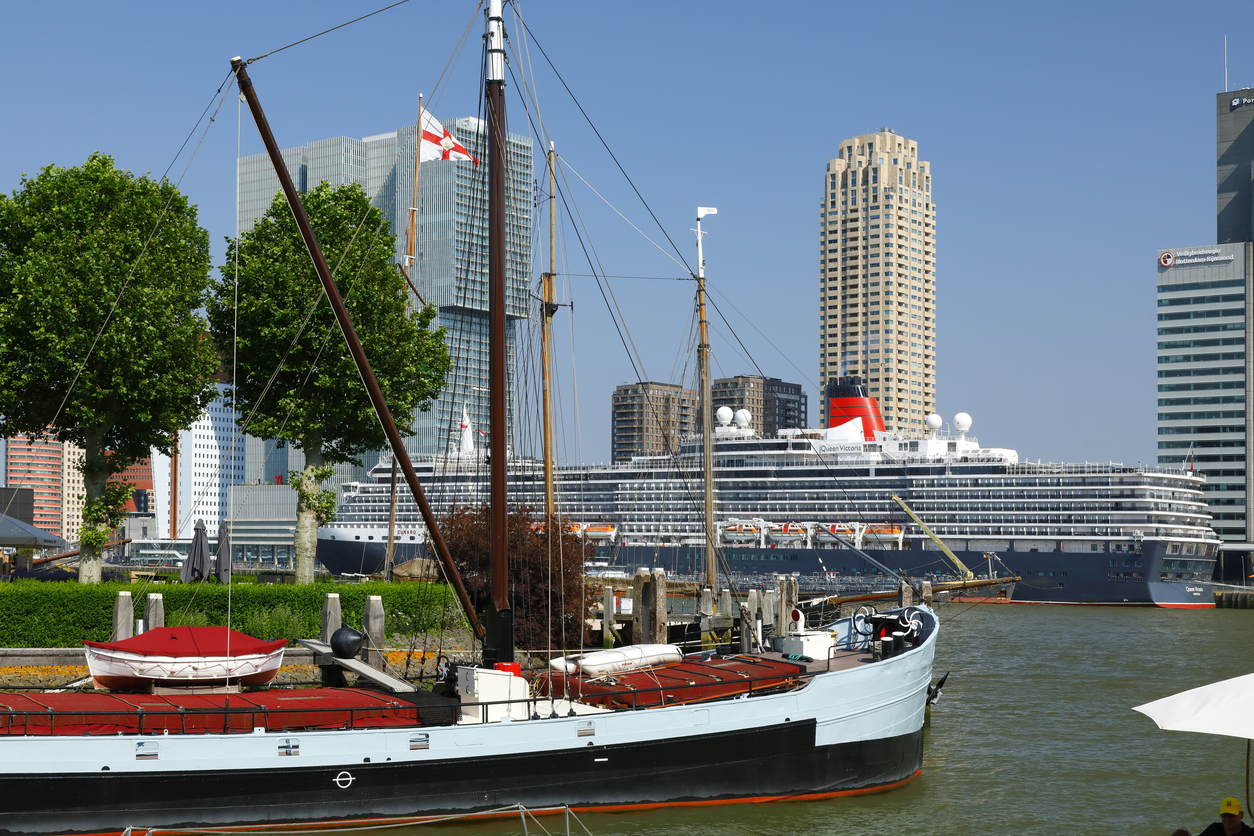There is no country in the world where there are as many bridges per square kilometre as the Netherlands! Why do we at DWG welcome this situation? Because automation and safety are going to play an increasingly important role across infrastructure in general, and specifically in respect of bridges and locks. Read more.
Bridges, more bridges, even more bridges ... and locks!
DWG is helping the Municipality of Rotterdam to set up an increasingly effective central control system for the bridges under its authority. The work includes addressing aspects that are outdated. For us, in collaboration with our partner, there is no such thing as ‘a bridge too far’. We identify what needs doing, persevere in the face of setbacks and readily contribute our ideas for innovative solutions – so we are an ideal partner for the Municipality of Rotterdam.
Municipality of Rotterdam's urban vision
After the successful period of reconstruction after WWII, Rotterdam continued its programme to establish itself as an international city with excellent river access. In the city centre, the Erasmus Bridge and the Kop van Zuid district emerged as striking landmarks. The city now has a skyline that is unprecedented in the Netherlands.
Beautiful residential neighbourhoods have been built on the periphery of the city. New night life and entertainment venues, restaurants and festivals have made Rotterdam a city with a young, trendsetting image. But Rotterdam has even more plans. The city will continue to grow during the next 25 years. Indeed, the city needs to accelerate these development activities to strengthen its competitiveness. Those are the stakes. Rotterdam is rapidly rolling out initiatives to make the city even more attractive for residents, businesses and visitors. And, as we hinted previously, the bridges play an important role in those plans!
Smarter control of four important bridges
The city’s nautical civil engineering structures are increasingly linked as software objects to a central control room equipped for remote operation. Many bridges are outdated and in need of renovation. CE marking is a key aspect of the modernisation and centralisation activities for this project. Manufacturers use the CE mark to indicate that a product, in this case a bridge, is safe and has been designed in accordance with specific standards.
DWG worked in collaboration with a partner on four special civil engineering structures for the Municipality of Rotterdam: they are the Grote Wijnbrug, the Ibisbrug, the Puntbrug and the Rederijbrug. Together, we are responsible for all the automation work involved in the ‘Wijnhavenbruggen in Rotterdam’ project. The project includes:
- Modernising the four nautical civil engineering structures;
- Setting up the link to the central control room in Kop van Zuid, and
- Replacing and migrating the current conventional control system.
A solution with a virtualised environment was chosen. This leads to an immediate pay-off, specifically: energy savings (up to 75%), less cabinet space (up to 80%), reduced maintenance, and the solution’s flexibility makes any future expansion easier to accommodate.
This challenge is definitely not a bridge too far. What we thought was so positive? This huge and prestigious project was all about getting the work done in the most efficient way possible. This was important because the city is always on the move. Minimising bottlenecks and minimising disruption to land and marine traffic was the overriding goal.
A ‘plan of action’ was drawn up for our solution. To minimise the migration effort and maximise efficiency, we decided to integrate the Grote Wijnbrug and Ibisbrug into the existing PCS7 Multiproject at the Kop van Zuid central control room. The advantage here was that we could include these software objects directly during the migration procedure and then migrate them at a later date to the latest PCS7 version.
Before the control system was replaced, we performed a baseline measurement for each nautical software object and professionally recorded and documented the outcomes. This was a crucial step in our approach for ruling out complications. There were also a number of positive spin-offs. Because the control system was replaced and migrated simultaneously, the entire SIVaaS environment could be built and tested in our own office environment beforehand, under the customer’s watchful supervision. This significantly shortened (downtime in) the conversion and commissioning processes.
You are always apprehensive when you switch off the old control system for the last time. It is a point of no return: the transition to the new control system. The nautical software objects have been designed and conceived to always allow local control by operators if central control is not possible for any reason.
Smooth migration
Commissioning was carried out overnight by an experienced team of experts according to a fully documented commissioning plan. The nautical structures could only be operated locally during this period. This allowed the migration to take place and completion of the SAT in the presence of the customer. DWG has successfully contributed to realising the Municipality of Rotterdam’s vision. In just one week, thirteen bridges were migrated, and three of those bridges in the Wijnhavenkwartier were modernised and linked to the central control room. The fourth bridge, the Rederijbrug in the Wijnhavenkwartier has not yet been connected; this tranche of work will start in the autumn. Something else to be proud of; prior to this project, we also migrated ten other objects for this customer.
Interested in a meeting? We'll be happy to oblige!
Are you looking for software or hardware specialists? Or a consultant who takes the time to help you get to the bottom of your issues? We would love to hear your story! Simply contact us for a productive meeting over coffee.



